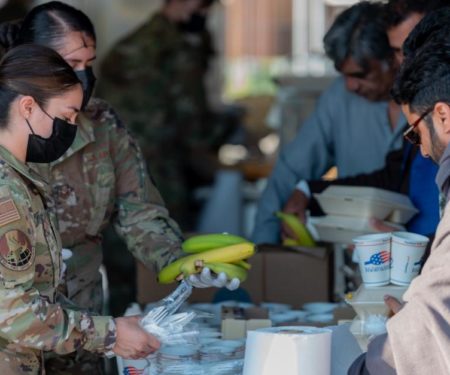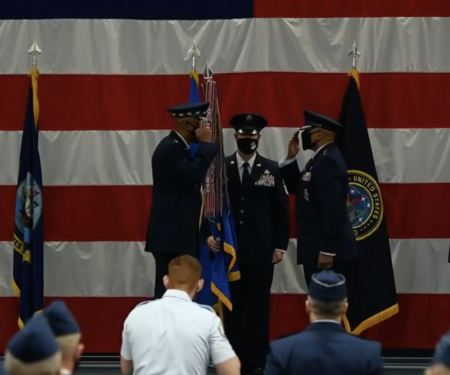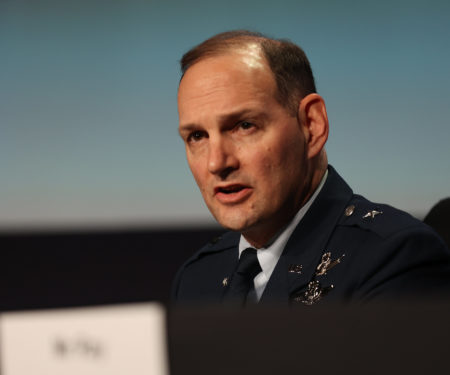Radar Sweep
Here are the Names of the 13 US Service Members Killed in Afghanistan Attack
Eleven Marines, one Navy corpsman and one soldier were “killed as the result of an enemy attack while supporting non-combatant evacuation operations,” according to a Saturday press release from the Department of Defense, which released the names of the U.S. troops.
Taliban Guard Airport as Most NATO Troops Leave Afghanistan
Taliban forces sealed off Kabul’s airport Saturday to most Afghans hoping for evacuation as the U.S. and its allies were ending a chaotic airlift that will conclude their troops’ two decades in Afghanistan.
Escape from Afghanistan: One Interpreter's Desperate Run Past the Taliban to Safety
The lieutenant took the phone. "Are you able to vouch for [Said]?" he asked. I stammered for a few seconds, shocked that my voice could change the outcome of this potentially life-defining moment for Said. I found the words and said yes, my reporting had confirmed he was an interpreter for six years at the Craig Joint Theater Hospital at Bagram Airfield, and that I could vouch for him. He had a visa issued by the U.S., I added, as Said had sent me a copy.
Death of the JEDI: Pentagon Learning from Terminated Cloud Initiative
When the Pentagon announced the cancelation of its highest-profile cloud computing initiative in July, not many were surprised. The lucrative Joint Enterprise Defense Infrastructure program, better known as JEDI, didn’t make sense from a business perspective, said Alex Rossino, an advisory research analyst at Deltek. “It didn’t make sense on any level, honestly.”
Chorus Grows to Declassify Space Threat Info From Services, Congress
The House Armed Services Committee’s draft policy bill calls for the head of the Space Force to review all classification of space systems “to determine if any programs should be reclassified or declassified.” The chairman’s mark of the fiscal 2022 National Defense Authorization Act is the latest in a growing chorus arguing that the classification of the vast majority of information regarding national security space impedes cooperation with allies and partners and limits the public’s understanding of the threat environment.
PODCAST: Afghanistan Assessment: The Rendezvous
In episode 37 of the Aerospace Advantage, John Baum engages with the Mitchell Institute for Aerospace Studies team, many of whom served in the theater, worked on the war from the policy vantage, and have known people who’ve paid the ultimate price in this conflict, to discuss the broader events surrounding America’s longest war. It will take years to understand what happened and why, but this conversation marks the start of that assessment.
2 Companies Win Contracts to Research Cyber Protections for Military Aircraft
The Air Force Research Laboratory awarded contracts to Booz Allen Hamilton and Ball Aerospace to research advanced cybersecurity and digital engineering to protect aircraft electronic systems against digital threats. The Aug. 24 indefinite-delivery, indefinite-quantity contracts to try to shield those avionics systems from cyberattacks are worth up to $200 million each over five years. The companies’ research will include cyber assessment and testing tools, cyber-hardening technologies, resilient cyber protections, and open-system architectures.
ANALYSIS: Who is ISIS-K?
Amira Jadoon, a terrorism expert at the U.S. Military Academy at West Point, and Andrew Mines, a research fellow at George Washington University’s Program on Extremism, have been tracking ISIS-K, the group that has claimed responsibility for the coordinated suicide bomb and gun assault that killed 13 U.S. troops in Kabul, for years and answered questions about who the terrorist group is and the threat it poses in a destabilized Afghanistan.
US Special Operations Vets Carry Out Daring Mission to Save Afghan Allies
With the Taliban growing more violent and adding checkpoints near Kabul's airport, an all-volunteer group of American veterans of the Afghan war launched a final daring mission the night of Aug. 25 dubbed the "Pineapple Express" to shepherd hundreds of at-risk Afghan elite forces and their families to safety, members of the group told ABC News.
Global Microelectronic Shortages Trickle Down to Military Satellite Programs
Defense Department satellite programs are feeling the effects of the widespread microchip shortage that has stymied carmakers and consumer electronic manufacturers. The Defense Advanced Research Projects Agency is hoping to launch as many as 12 satellites into low Earth orbit next year for the Blackjack program, but supply shortages are creating schedule risk for the military space network demonstration.
Q&A With Preston Dunlap, Chief Architect for the Air Force and Space Force
Preston Dunlap, chief architect for the Air Force and Space Force, recently spoke with GovConWire for an exclusive Q&A session regarding the first phase of delivery for Joint All-Domain Command and Control (JADC2), the speed and timing challenges of technology development, the future of network modernization, and more.
VIDEO: Nuclear Deterrence Forum With Lt. Gen. Thomas A. Bussiere
In the Mitchell Institute’s virtual Nuclear Deterrence & Missile Defense Forum with Lt. Gen. Thomas A. Bussiere, deputy commander of United States Strategic Command, Bussiere discusses the threat of Chinese and Russian nuclear stockpiles, the U.S. nuclear modernization effort, the future of U.S. nuclear deterrence, and other topics.
‘Tonight, We’ll be Maxed Out.’ Inside Ramstein Air Base’s Push to Host Thousands of Evacuees From Afghanistan
In less than a week, the air base that runs the U.S. military’s European and African operations has transformed into an international city, hosting tens of thousands of men, women, and children fleeing Afghanistan. Officials at Ramstein Air Base, Germany, first learned Aug. 19 that evacuees escaping the Taliban would be brought to the installation for processing, medical evaluations, and temporary housing before they are resettled in the United States. By the following day, the first influx of C-17 military transport aircraft arrived, filled mostly with American citizens, Afghan nationals, and their families.
VIDEO: “Lifeline: Aerospace Logistics Tomorrow”
In the 1960s, photographic effects pioneer Con Pederson made films for the U.S. Air Force about space. The Computer History Archives Project recently unearthed one of those films, believed to be created in 1965 but not released by the Air Force until 1971. The 13-minute-long film postulates how the future Aerospace Force will do its logistics to orbit and a moon base.





